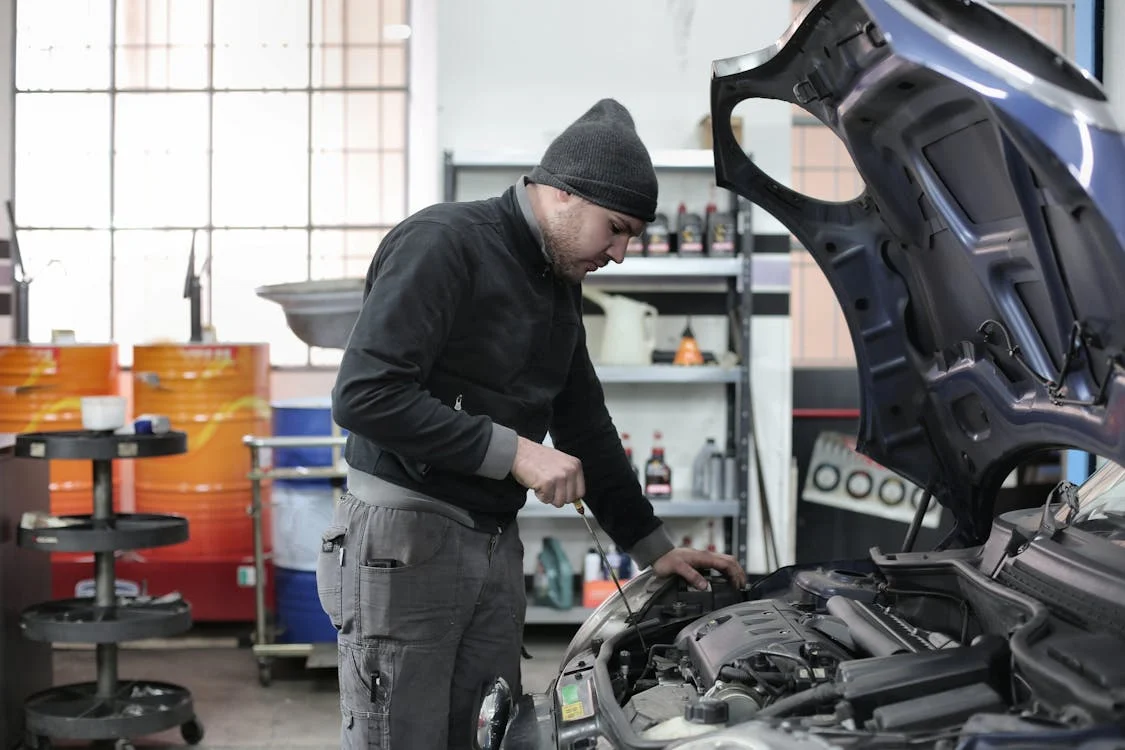
Understanding Brake Components: What Your Technician Checks
Brakes are arguably the most important safety system in your vehicle. When you press that pedal, you’re trusting a finely tuned set of components to bring your car to a controlled stop—every single time. But what exactly is happening behind the scenes? And what is your technician really looking at when they say, “It’s time for a brake inspection”?
Let’s break it all down—literally and figuratively—so you know what to expect, how brake systems work, and why routine checks at a trusted shop like Advanced Auto Clinic in Niagara Falls are essential to keeping you and your vehicle safe.
Why Brake Maintenance Matters
Brake issues aren’t always loud or obvious. Sometimes, your vehicle might stop just fine—until one day it doesn’t. That’s why preventative care and professional inspections are key.
Your technician checks your brakes not just to see what’s worn out, but to make sure everything is working together properly. Brakes don’t fail all at once; it’s often a slow decline caused by wear, environmental conditions, or neglected maintenance. Catching problems early could mean the difference between a quick repair and a costly replacement—or worse, an accident.
The Core Brake System: What’s Involved
Your brakes are a system, not just one part. Here’s what technicians at Advanced Auto Clinic are checking during a brake inspection:
1. Brake Pads and Shoes
These are your primary friction materials. In disc brake systems, brake pads clamp onto a spinning disc (called a rotor). In drum brakes, brake shoes press outward against a rotating drum.
What your technician checks:
- Thickness: Worn pads or shoes need replacing before they hit the minimum safe level.
- Even wear: Uneven wear might signal a caliper or hardware issue.
- Glazing or contamination: Oil or brake fluid on the pads can reduce effectiveness.
2. Brake Rotors and Drums
These components work with your pads/shoes to create stopping power through friction.
What your technician checks:
- Thickness and surface condition: Rotors and drums can become too thin to operate safely.
- Warping: Heat can cause these parts to warp, leading to vibrations or reduced braking efficiency.
- Scoring: Deep grooves can signal that the friction materials wore out and metal was grinding on metal.
3. Calipers and Wheel Cylinders
These are the mechanical components that press the pads or shoes into the rotors or drums when you press the brake pedal.
What your technician checks:
- Function: Calipers should move smoothly and evenly.
- Leaks: Fluid leaks from calipers or wheel cylinders reduce braking power and signal a need for immediate repair.
- Sticking: A caliper that doesn’t release properly can cause constant friction and premature wear.

4. Brake Lines and Hoses
These transport brake fluid from your master cylinder to the wheels. Even though they’re small, they’re critical.
What your technician checks:
- Leaks: Any brake fluid leak is serious.
- Flexibility: Rubber hoses can dry out and crack over time.
- Corrosion: Metal lines can rust, especially in Ontario’s salty winter conditions.
5. Brake Fluid
Brake fluid transfers force from your pedal to the brake components. It also absorbs moisture, which can lead to internal corrosion if not changed regularly.
What your technician checks:
- Fluid level: Low levels might indicate a leak.
- Fluid condition: Dirty or old fluid doesn’t perform well and may need to be flushed.
Moisture content: Some shops test for this specifically, as high water content lowers boiling points and braking performance
6. Master Cylinder and Booster
The master cylinder is the heart of the hydraulic brake system. The brake booster helps make pedal pressure easier and more effective.
What your technician checks:
- Leaks or wear in the master cylinder.
- Vacuum leaks or issues with the booster.
Proper pedal response and feel
Signs You Might Have Brake Trouble
Even if you haven’t had an inspection yet, here are some red flags that your brakes need attention:
- Squealing or grinding noises when you brake.
- Soft or spongy brake pedal
- Vibrations when braking.
- Pulling to one side during stops.
- Warning lights, such as ABS or Brake System indicators.
- Longer stopping distances or the need to press harder on the brake pedal.
If you notice any of these, don’t wait. Even a minor issue can quickly escalate into something dangerous.
What Happens During a Brake Inspection at Advanced Auto Clinic?
At Advanced Auto Clinic, we treat every brake inspection as an opportunity to make sure your vehicle is safe and sound—not just to fix what’s broken. Here’s what you can expect:
1. Visual Inspection
We start by looking over the entire braking system—pads, rotors, calipers, hoses, and more. We check for visible signs of damage, wear, leaks, or corrosion.
2. Measurements
Using precise tools, we measure the thickness of brake pads and rotors and compare them to manufacturer specifications. We don’t guess—we know.
3. Brake Fluid Test
We check the level and condition of your brake fluid, testing for contamination and moisture buildup. If it’s time for a flush, we’ll let you know.
4. Functional Testing
We check how your brakes perform under normal conditions—how the pedal feels, how the brakes engage, and whether there are any noises or vibrations.
5. Diagnostic Scanning (if needed)
If your brake warning lights are on, we’ll scan the onboard computer for trouble codes that can point to ABS or electronic brake system issues.
The Importance of Trusted, Experienced Technicians
Brake systems are complex and require expert care. At Advanced Auto Clinic, our certified technicians have over 20 years of experience working on all types of vehicles—from compact cars to SUVs and trucks.
We don’t just swap parts—we take the time to diagnose the problem, explain your options, and perform high-quality repairs that last. Our transparent pricing and commitment to honesty mean no surprises and no unnecessary repairs.
We also understand life gets busy. That’s why we offer convenient 24/7 drop-off and valet service options, so you don’t have to rearrange your schedule to keep your car safe.

How Often Should Brakes Be Checked?
As a rule of thumb, you should have your brakes inspected at least once a year, or every 20,000 km—whichever comes first. That said, driving habits, road conditions, and the age of your vehicle can all impact how often your brakes need service.
Live in Niagara Falls or the surrounding area? With our rough winters, salted roads, and occasional stop-and-go traffic, it’s a good idea to be proactive about brake care.
Protect Your Vehicle and Your Peace of Mind
Your brakes are too important to ignore. With a thorough inspection from the pros at Advanced Auto Clinic, you’ll know exactly what’s going on and what (if anything) needs attention.
Whether you’re hearing noises, feeling vibrations, or just want to be safe, bring your car in and let us take a look. You’ll leave with confidence—and brakes you can count on.
Need your brakes checked?
Stop by Advanced Auto Clinic at #2-4087 Stanley Ave, Niagara Falls, Ontario, or give us a call to schedule your inspection. With our experienced team, honest service, and commitment to your safety, we’ll make sure your vehicle stays ready for the road—rain, shine, or snow.
Your safety is our priority—book your brake inspection today!

